When you’re learning how to ride or buying your first horse, you want things to be easy. Of course, by the time you buy a horse, you’re at least somewhat competent riding and caring for them.
Many new owners, however, discover that there is a lot more involved than they’d imagined. The right horse with a good personality makes it so much easier to deal with the challenges that inevitably come along.
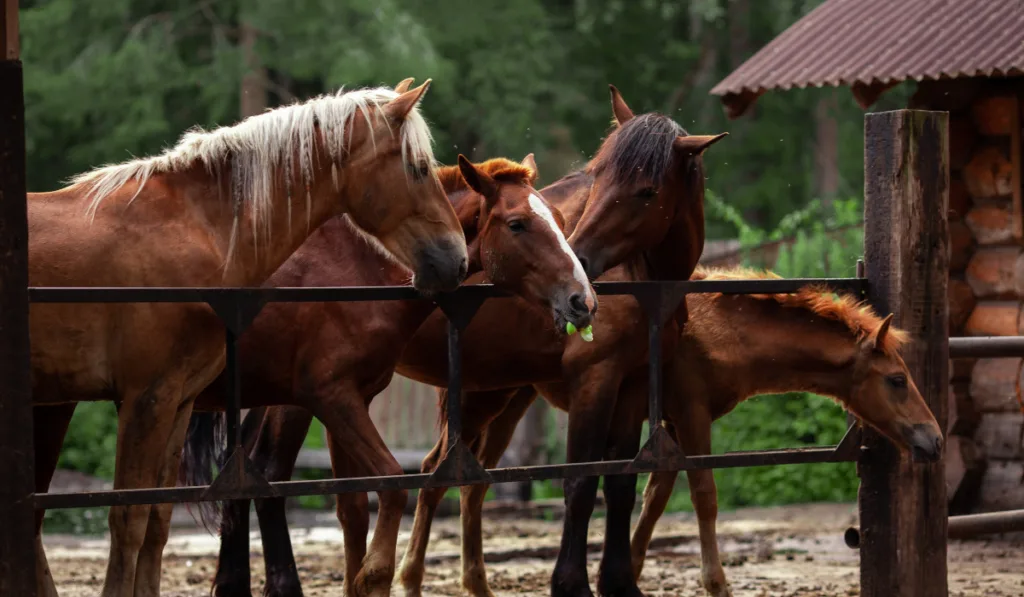
Certain horse breeds are well-suited for beginners. They require little maintenance, generally like being around humans, and don’t spook easily.
These types of horses are tons of fun and you’ll feel comfortable riding them yourself or letting kids play around them without having to watch them every second.
On the other hand, there are some types and breeds of horses that aren’t great for new riders or owners. They tend to be stubborn, take more time to feel comfortable around people, and can be jittery.
If you’re a new rider or are interested in buying your first horse, there are certain breeds that you probably want to stay away from. Here are 9 of the worst horse breeds for beginners.
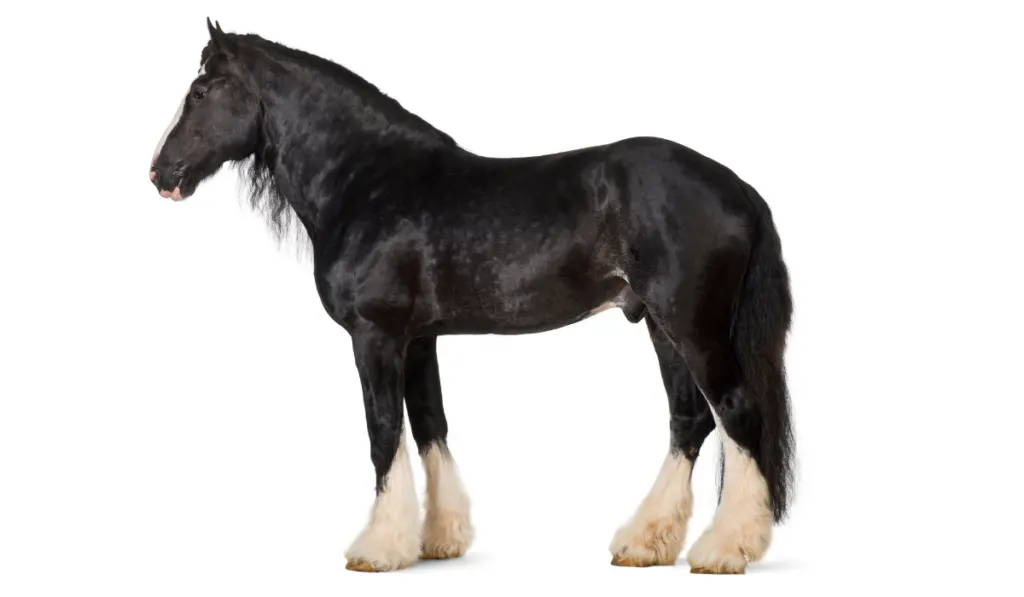
Table of Contents
1. The Shire
Shires make a lot of people nervous because of their sheer size. These horses are the tallest in the world, and the tufts around their hooves can make them appear imposing.
These horses were preferred centuries ago for their ability to stay calm in battle and for their strength in pulling things on working farms.
Lost in all of the attention to their size is the fact that Shires are some of the gentlest horses out there.
They’re extremely hard to spook and rarely buck. If you’ve got someone who is over 250 lbs wanting to learn how to ride a horse, the Shire is an ideal choice.
However, Shires aren’t great for new riders because they can be challenging to get on and off. They also, due to no fault of their own, can be intimidating to people if you’re trying to get trail ride customers or introduce the horse to some friends.
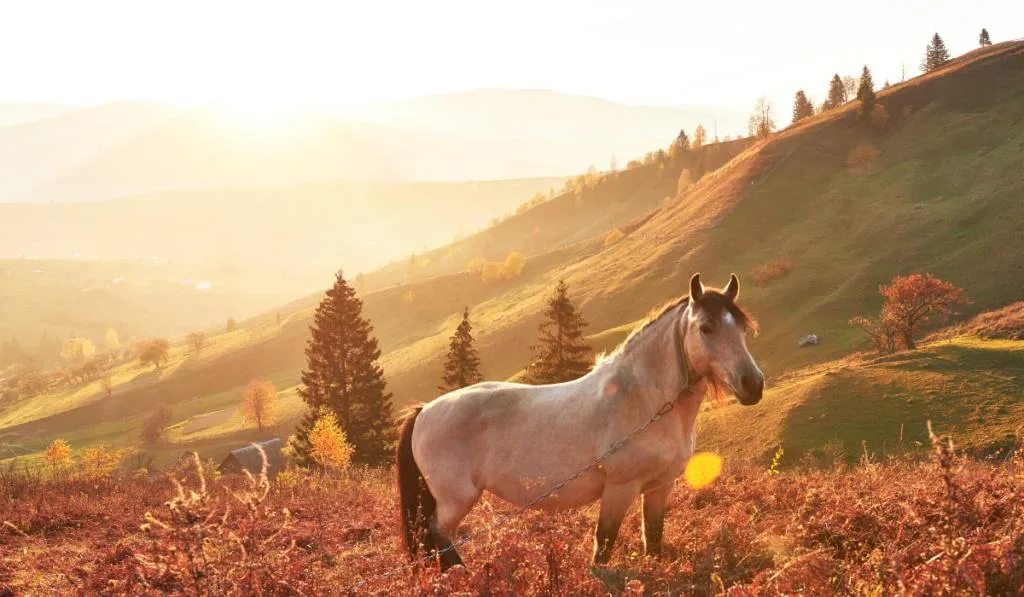
2. The Arabian
Arabians are a ton of fun to ride but are better suited for experienced riders. These horses’ personalities tend to run hot. They can surprise you on a ride, and if you’re not ready for what’s coming it could get you hurt or be a bad experience.
Arabians are very intelligent horses, which makes them quick to pick up cues from trainers, but all of those smarts can make them very stubborn.
They’ll know how to manipulate owners and riders into getting what they want. If you don’t know what you’re doing with them, they can develop bad habits quickly.
A major problem with smart horses like Arabians is that they will be able to perceive when someone isn’t equipped to handle them. That can turn to viscousness, so watch out for bites or bucks.
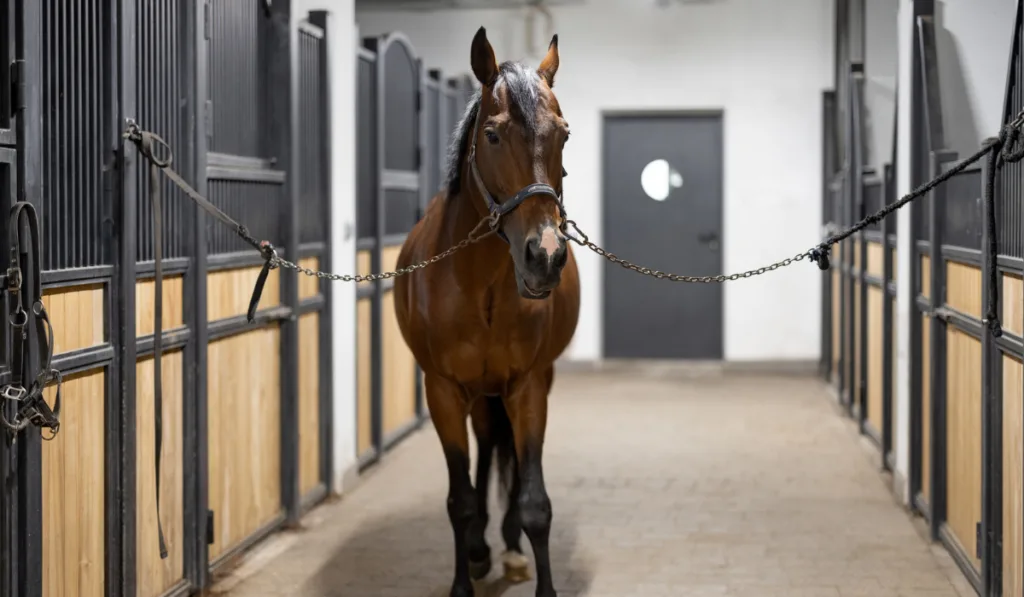
3. The Thoroughbred
Thoroughbreds were originally bred to be racehorses. They are large, strong, fast, and have a lot of stamina. These are also considered to be hot-blooded horses that can be high-strung and energetic.
For beginners, it can be too much to handle. Even though they look amazing and perform well under the right conditions, they’re not an entry-level horse.
They have a ton of energy, so you need someone with experience who is dedicated to training them. The wrong move, given then prowess and speed, can end up in injury, so you’ve got to be careful.
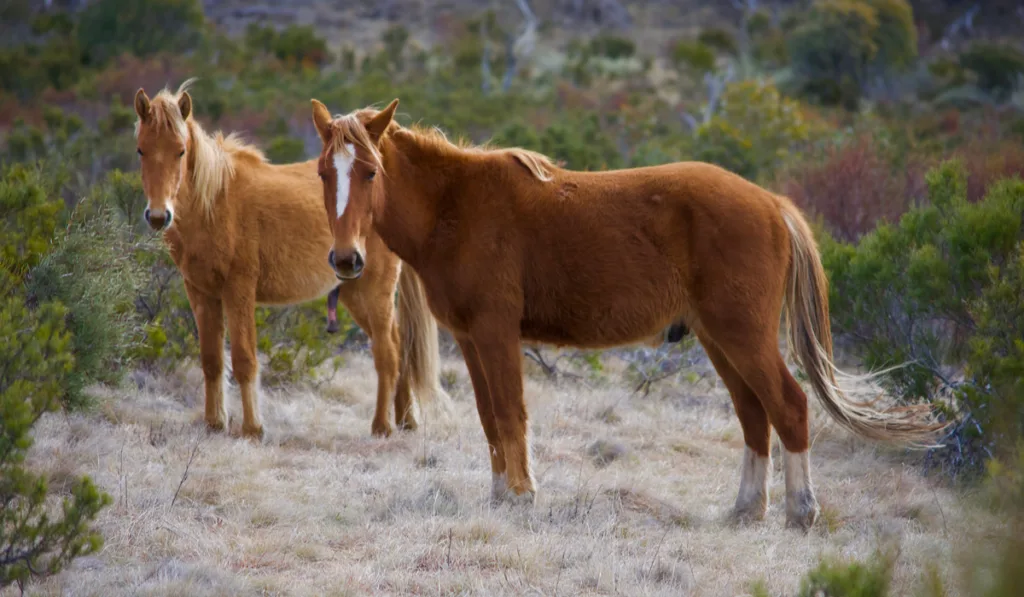
4. Australian Brumbies
These horses are typically known to be feral and aren’t good for riding and new owners should think twice before buying or adopting one. Even after Brumbies are broken, they’re still pretty shy around humans.
That shyness can be difficult for beginners to understand and overcome. They maintain a lot of wild tendencies that make their behavior hard to predict. If you’re not sure how they’ll act, it’s hard to ride them safely.
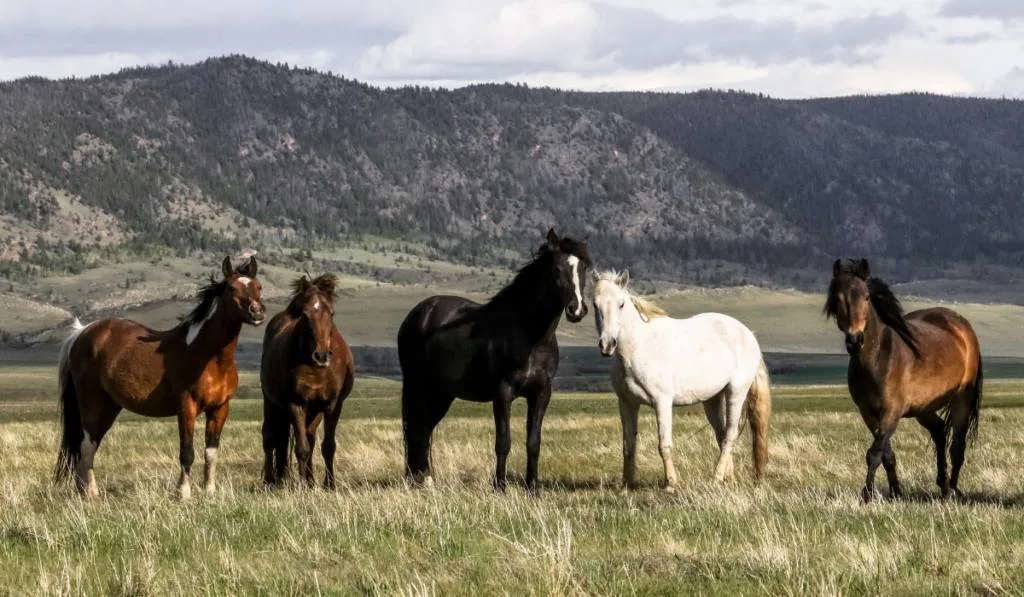
5. The Mustang
The Mustang can be an amazing trail riding horse because of its natural ability to handle difficult terrain and stamina.
However, these usually aren’t ideal for beginner riders or new owners because they can still be quite stubborn and, under the wrong conditions, aggressive.
Mustangs have a long history of being very territorial, and they can challenge owners and riders if they feel that their space is threatened.
They also like to test boundaries to see how you’ll react, so if you don’t know how to deal with it, they can be hard to form bonds with.
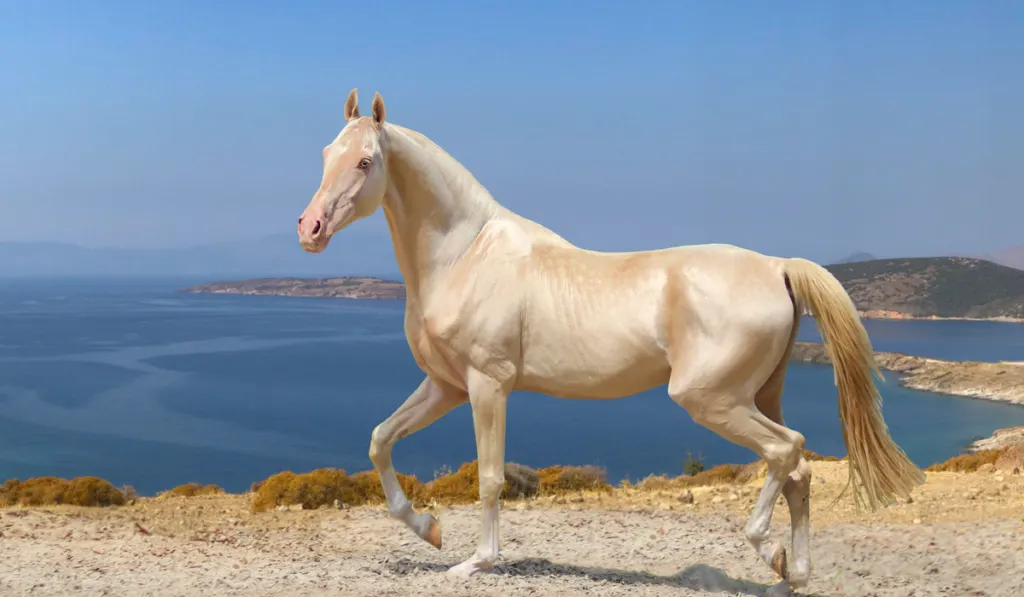
6. The Akhal-Teke
You may never have heard of the Akhal-Teke because they’re a rare breed in the U.S. These horses hail from Turkmenistan, where they were used by riders to cross deserts. Nomads preferred these horses because they were strong and durable.
One of the drawbacks with Akhal-Tekes is that they typically form strong bonds with a single rider. They’re not great for a family, and they’re known to kick or bite people who they feel may be getting too close to their rider.
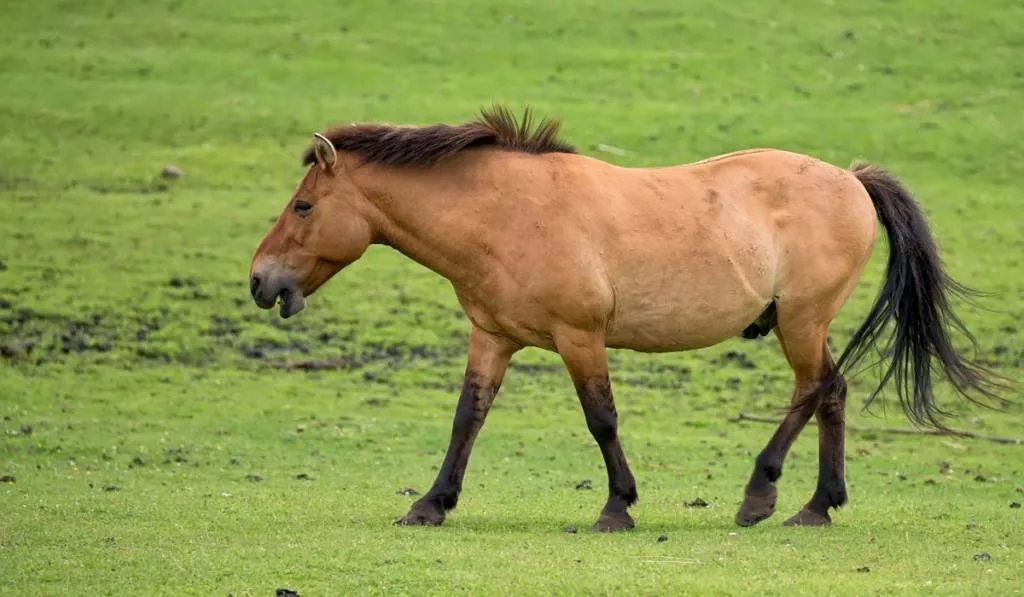
7. The Przewalski
It’s a hard name to spell and even harder to say. The Przewalski is native to Mongolia and historically has been considered too wild to ride. That says a lot coming from the experienced riders from that part of the world.
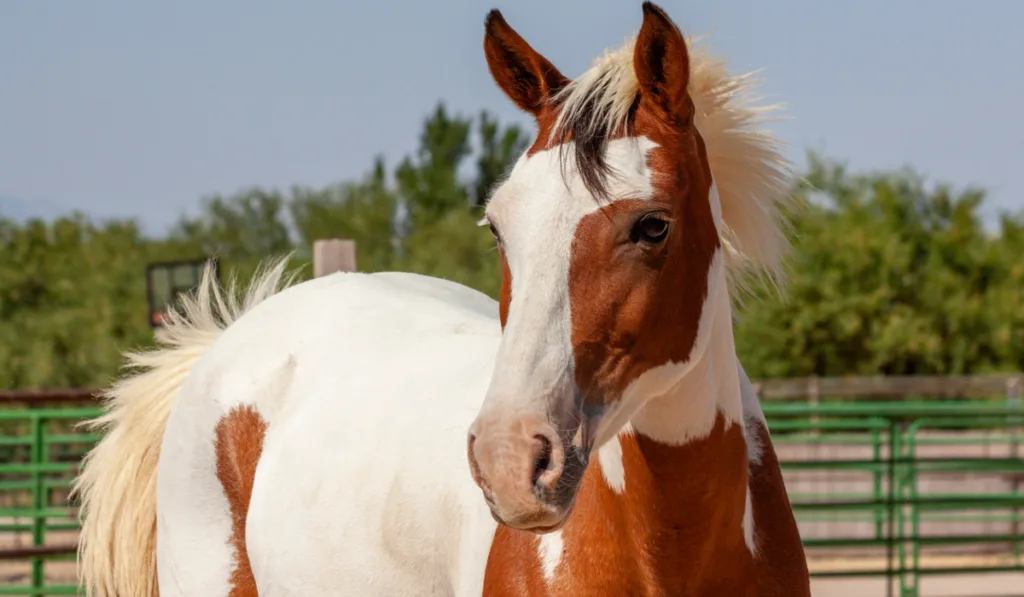
8. The Barb
The Barb is a breed that shares many characteristics with Arabians and Akhal-Tekes. It’s popular in the Middle East as a packhorse and, to a lesser degree, a riding horse.
It has a muscular build with solid colors and is considered to be a hot-blooded horse. Its limitations have prevented it from becoming a popular horse in the United States.
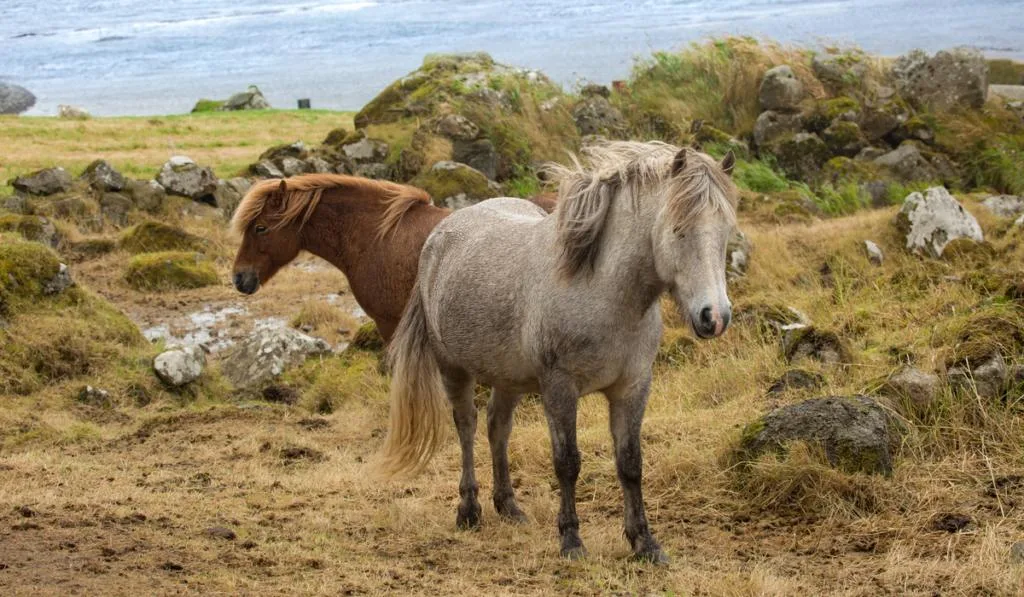
9. The Faroese
Similar to Icelandic horses, the Faroese are known for being stubborn with a wild streak. Even if you wanted a Faroes, you probably won’t be able to find one.
These are one of the most endangered horse breeds in the world. Historically, they were used for riding in the hills and to complete tasks around the farms.
As machines came into wider use, they were left behind. There are ongoing rescue efforts to try to bring their numbers back up, and the export of the horse is currently banned.
Generally speaking, the breed of the horse matters less than the way it was raised and how it was trained. Even with notoriously difficult breeds, there is going to be a spectrum of personalities.
The same goes for horse breeds with a reputation for calm and friendliness. Some quarter horses are stubborn, spook easily, and don’t love to be around people.
Staying away from some of the horse breeds on your list will improve your chances of getting a gentle horse, but training them properly will make the biggest difference in the long run.
If you’re a new rider or a new owner, talk to someone who has experience with different horse breeds who can find the perfect horse for you.
Resources
- https://www.karinabrez.com/blog/2017/3/28/arabian-horse-temperament-and-personality
- https://horsecrew.com/what-is-the-most-dangerous-horse-breed-in-the-world/
- https://www.besthorserider.com/hot-blooded-horse-breeds/
- https://www.nordgen.org/en/strong-stubborn-and-endangered-but-this-breed-is-on-a-comeback/
